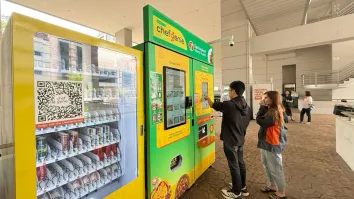Restaurant dining-in lagging behind foodservice growth
Digital adoption, economic pressures shape industry dynamics.
Despite expectations of growth, the full recovery of restaurant dining-in within the Asia-Pacific foodservice sector is not anticipated until 2028. This slow rebound is attributed to several influential factors reshaping the industry post-pandemic, according to Emil Fazira, Food Insight Manager in Asia at Euromonitor International.
"2023 saw the return of more customers to food service, as well as growth from the premium segment," Fazira explained. She highlighted specific markets like Hong Kong and Southeast Asia, including Thailand and the Philippines, as key drivers of this resurgence.
In Thailand, the revival of normal lifestyle patterns and the recovery of inbound tourism played crucial roles. Similarly, in the Philippines, expansion beyond major cities helped extend service offerings and menu diversity to new consumer segments.
However, Fazira noted that the road to pre-COVID levels remains challenging. "The pandemic has accelerated consumer adoption of digital channels, making it difficult for traditional dining habits to return," she stated. This shift towards more hybrid lifestyles, where consumers balance between working from home and the office, has significantly boosted familiarity with delivery platforms.
Economic pressures have also continued to influence consumer behaviour, driving demand for value through unique offers, bundling discounts, and loyalty programs. "Consumers are becoming more adept at finding the best deals, which affects how they choose to engage with food services," Fazira added.
The evolution of foodservice delivery has been another transformative factor. The rise of super apps and significant investments in digital resources by foodservice providers have enriched the ecosystem of food delivery. This technological advancement has not only enhanced service delivery but also expanded the operational scope of these businesses.
"Foodservice is no longer just about the location of purchase and consumption," Fazira remarked, emphasising the sector's increased ambition. This change allows food services to engage with customers beyond traditional dining experiences, catering to a wider range of eating occasions and lifestyle celebrations.
Looking forward to 2024, Fazira predicts continued pressures from the economic climate but notes some advantages for street stores, kiosks, and limited-service restaurants. These establishments benefit from their flexibility in transaction options and their integration with digital and online ordering systems. "They offer both comforting value meals and exciting, limited edition options, which can draw customer interest and spend," she noted.
Chain operators, in particular, have shown notable growth compared to independent foodservice providers, outpacing them by almost four percentage points in growth over the last five years. "This trend is expected to continue, with chain stores and kiosks growing at a 4% CAGR from 2019 to 2024," Fazira concluded.




























Commentary
Design, Data, Discipline: The answer to attrition for QSRs in Asia